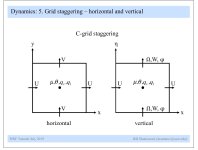I am running WRF SCM and the README file states that the WRF SCM "runs on a 3x3 stencil with periodic lateral boundary conditions in X and Y." I am wondering why is a 3x3 stencil used instead of just 1x1, as most SCM assumes? I tried changing the namelist option to run a 1x1 SCM, and it failed. However, 2x2 works.
I am wondering if this has to do with the way WRF numerical computation works, specifically the computation of higher order advection. As WRF allows up to the 6th order advection, I wonder if this is why there is a requirement for the minimum number of grid? Would someone be able to enlighten me to this?
Thank you!
I am wondering if this has to do with the way WRF numerical computation works, specifically the computation of higher order advection. As WRF allows up to the 6th order advection, I wonder if this is why there is a requirement for the minimum number of grid? Would someone be able to enlighten me to this?
Thank you!

